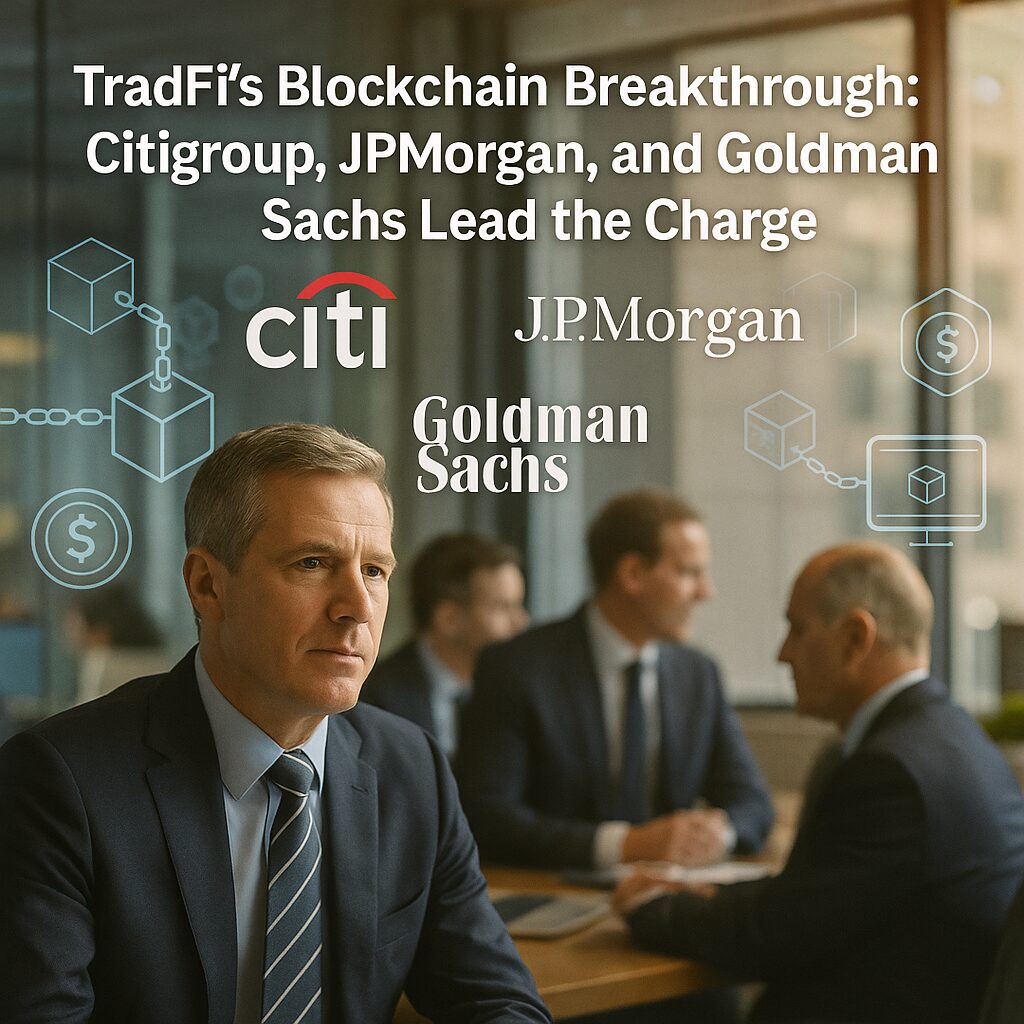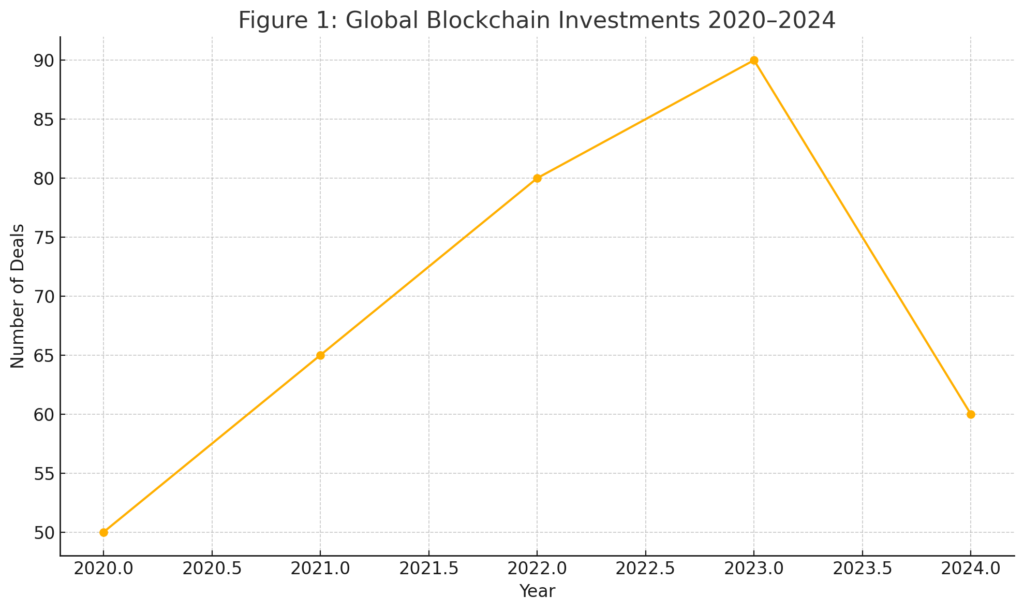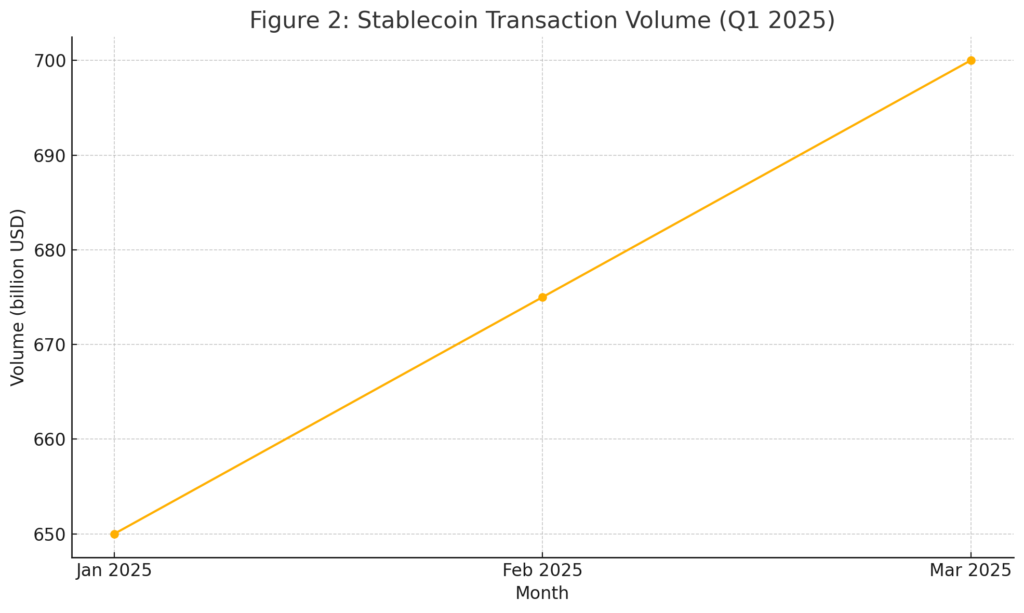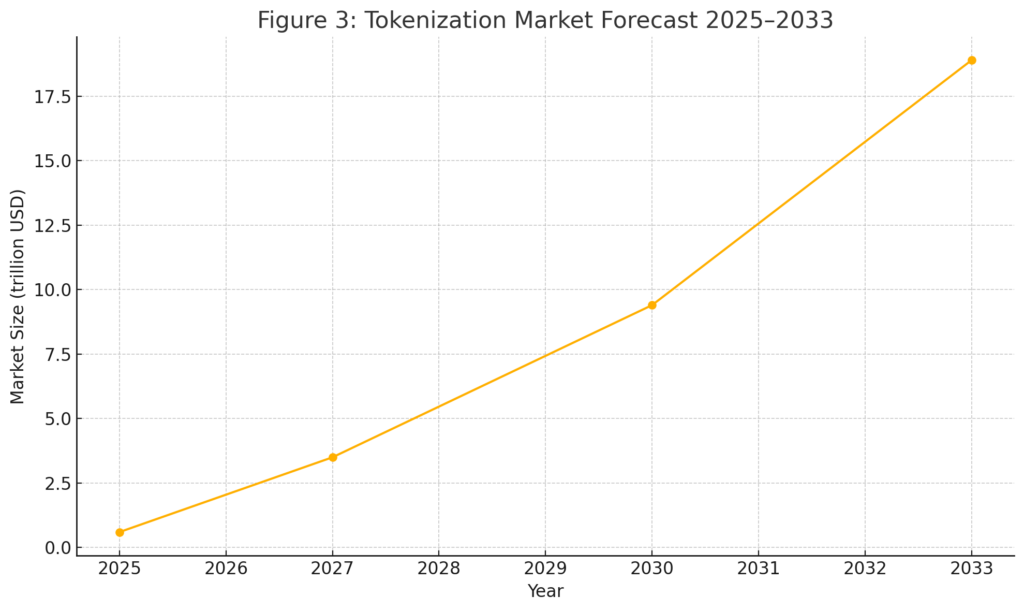
Main Points:
- Traditional banks are increasingly investing in blockchain startups, with 345 deals from 2020–2024.
- Mega-rounds (over $100 million) accounted for 33 out of 345 deals, focusing on infrastructure, tokenization, custody, and payments.
- Major examples include CloudWalk ($750 million raised) and Solaris ($100 million+ from SBI).
- Stablecoin volumes surged to $650–$700 billion per month in Q1 2025; banks plan proprietary stablecoins.
- Regulatory clarity via the GENIUS Act (US) and MiCA (EU) is accelerating adoption.
- Tokenization of real-world assets is booming: projected to grow from $0.6 trillion in 2025 to $18.9 trillion by 2033.
- Institutional sentiment is strong: 90% of 1,800+ financial leaders expect major blockchain impact within three years.
1. TradFi’s Blockchain Investment Boom
Between January 1, 2020, and December 31, 2024, global banks completed 345 investments into blockchain startups, primarily in early funding rounds. Among these, Citigroup and Goldman Sachs led with 18 deals each, followed by JPMorgan Chase and Mitsubishi UFJ Financial Group with 15 apiece.
Figure 1: Global Blockchain Investments 2020–2024

The focus on mega-rounds (deals exceeding $100 million) has intensified, with banks participating in 33 such financings over four years, channeling capital into infrastructure, tokenization platforms, custody services, and next-gen payment solutions. This trend underscores traditional finance’s recognition of blockchain’s strategic value beyond speculative crypto trading.
2. Case Studies: CloudWalk and Solaris
Two emblematic deals illustrate this momentum:
- CloudWalk (Brazil): Supported by Itaú and other investors, CloudWalk secured over $750 million in two funding rounds, aiming to build blockchain-enabled payment rails across Latin America.
- Solaris (Germany): Backed by SBI Holdings with an initial $100 million+ investment, Solaris became a majority-owned SBI subsidiary, enhancing tokenization and banking-as-a-service offerings in Europe.
These successes highlight how cross-border partnerships between TradFi giants and blockchain innovators are fostering scalable use cases in payments and tokenization.
3. Stablecoins: From Volatility Shield to Programmable Money
Blockchain’s utility in payments is exemplified by stablecoins. According to a Citigroup report, stablecoin transaction volumes reached $650–$700 billion per month in Q1 2025, surpassing many traditional rails. Recognizing this, Citigroup’s CEO Jane Fraser announced plans for a Citi stablecoin, alongside exploring tokenized deposits and custody solutions for digital assets.
Figure 2: Stablecoin Transaction Volume (Q1 2025)

Banks’ stablecoin initiatives aim to deliver 24/7 programmable money without market volatility, enabling real-time clearing and settlement across borders. This shift promises to reshape corporate treasury operations and cross-border remittances by reducing costs and settlement times.
4. Regulatory Tailwinds: GENIUS Act and MiCA
Regulatory clarity is vital for institutional adoption. In the United States, the proposed GENIUS Act would establish comprehensive stablecoin regulation, safeguarding reserves and custodial practices. Meanwhile, the EU’s MiCA framework (“Markets in Crypto-Assets”) provides a unified rulebook for issuers and service providers.
These developments are fostering confidence among banks and investors, reducing legal uncertainty and encouraging further capital allocation to blockchain ventures.
5. The Tokenization Tsunami
Driven by demand for real-world blockchain applications, tokenization is set to revolutionize asset ownership. As of 2025, the tokenized asset market sits at roughly $0.6 trillion. According to a joint report by Ripple and Boston Consulting Group, this figure is projected to surge to $9.4 trillion by 2030 and $18.9 trillion by 2033.
Figure 3: Tokenization Market Forecast 2025–2033

Tokenized real-world assets (RWAs) span stablecoins, tokenized deposits, corporate bonds, money market funds, and more. The high growth rate (53% CAGR) reflects institutional enthusiasm for fractional ownership, enhanced liquidity, and operational efficiencies in asset trading and settlement.
6. Industry Outlook and Conclusion
A survey of over 1,800 financial leaders found 90% believe blockchain and digital assets will exert “major or very major” impact on the industry within three years. This consensus underscores a broader shift: blockchain is no longer a fringe innovation but a core component of future financial infrastructure.
Summary:
As Citigroup, JPMorgan Chase, Goldman Sachs, and others deepen their blockchain engagements—through investments, stablecoin issuance, and tokenization partnerships—they are laying the groundwork for a more efficient, transparent, and inclusive financial ecosystem. Regulatory frameworks like the GENIUS Act and MiCA will accelerate this transformation, unlocking new revenue streams and practical blockchain use cases for businesses and consumers alike.
Blockchain’s integration into TradFi marks a pivotal moment: from speculative assets to programmable money and tokenized real-world value, the next phase of finance is being built today.

